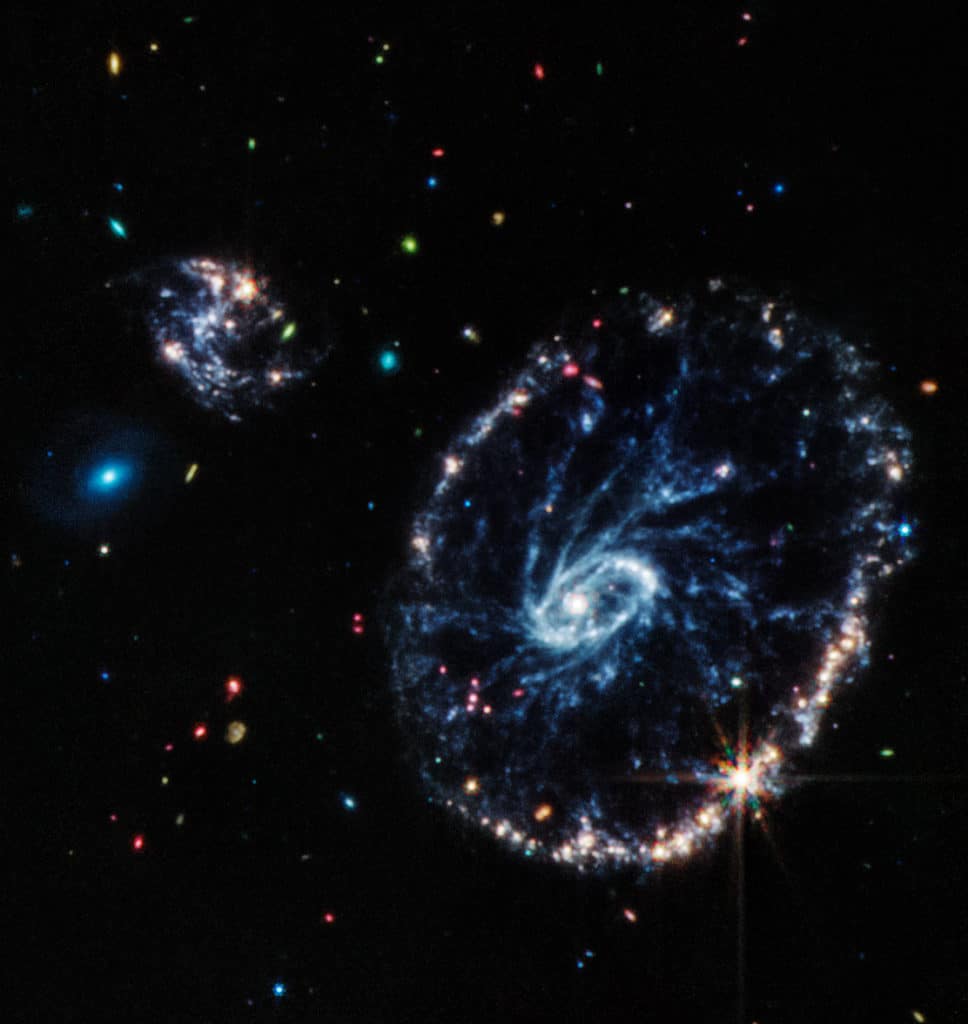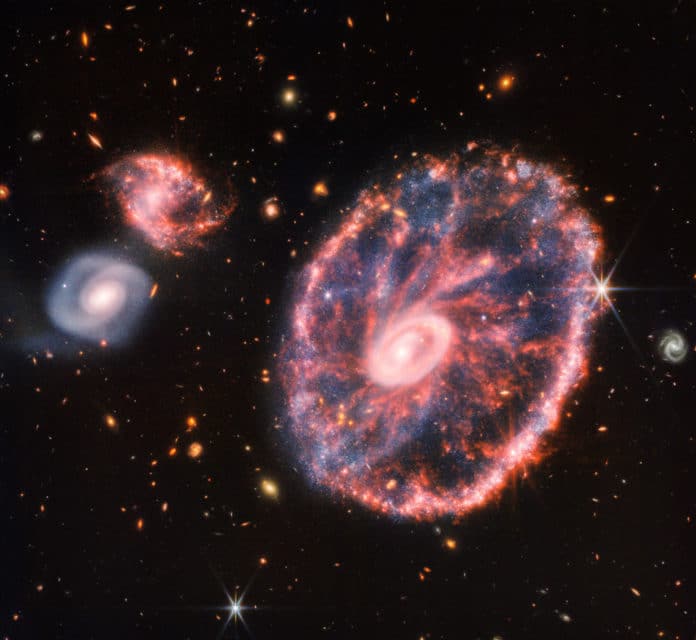NASA’s James Webb Space Telescope recently captured the chaos of the Cartwheel Galaxy that lies almost 500 million light-years away in the Sculptor constellation. It also captured two smaller companion galaxies against a backdrop of many other galaxies.
This detailed image produced by Webb’s powerful infrared gaze revealed new details about star formation and the galaxy’s central black hole. It shows how the Cartwheel Galaxy has changed over billions of years.
The cartwheel galaxy, as seen in the image, appears like a wagon wheel. Its appearance results from an intense event – a high-speed collision between a large spiral galaxy and a smaller galaxy (not visible in this image).
NASA’s officials said, “Collisions of galactic proportions cause a cascade of different, smaller events between the galaxies involved; the Cartwheel is no exception.”
The galaxy contains two rings: a bright inner ring and a surrounding, colorful ring. Both rings expand outwards from the center of the collision, like ripples in a pond after a stone is tossed into it. Due to these exciting features of the galaxy, this galaxy is also known as the Ring galaxy.
Huge young star clusters are seen in the brightest regions of the core, which also includes an enormous amount of hot material. On the other side, star formation and supernovae predominate in the outer ring, which has been growing for nearly 440 million years. As it grows, this ring collides with the surrounding gas, causing star formation.
Other telescopes, including the Hubble Space Telescope, have previously examined the Cartwheel. But the dramatic galaxy has been shrouded in mystery – perhaps literally, given the amount of dust that obscures the view. Webb, with its ability to detect infrared light, now uncovers new insights into the nature of the Cartwheel.

NASA said, “The Near-Infrared Camera (NIRCam), Webb’s primary imager, looks in the near-infrared range from 0.6 to 5 microns, seeing crucial wavelengths of light that can reveal even more stars than observed in visible light. This is because young stars, many of which are forming in the outer ring, are less obscured by the presence of dust when observed in infrared light. In this image, NIRCam data are colored blue, orange, and yellow. The galaxy displays many blue dots, individual stars, or pockets of star formation. NIRCam also reveals the difference between the smooth distribution or shape of the older star populations and dense dust in the core compared to the clumpy shapes associated with the younger star populations outside it.”
“Learning finer details about the dust that inhabits the galaxy, however, requires Webb’s Mid-Infrared Instrument (MIRI). MIRI data are colored red in this composite image. It reveals regions within the Cartwheel Galaxy rich in hydrocarbons and other chemical compounds, as well as silicate dust, like much of the dust on Earth. These regions form a series of spiraling spokes that essentially form the galaxy’s skeleton. These spokes are evident in previous Hubble observations released in 2018, but they become much more prominent in this Webb image.”
